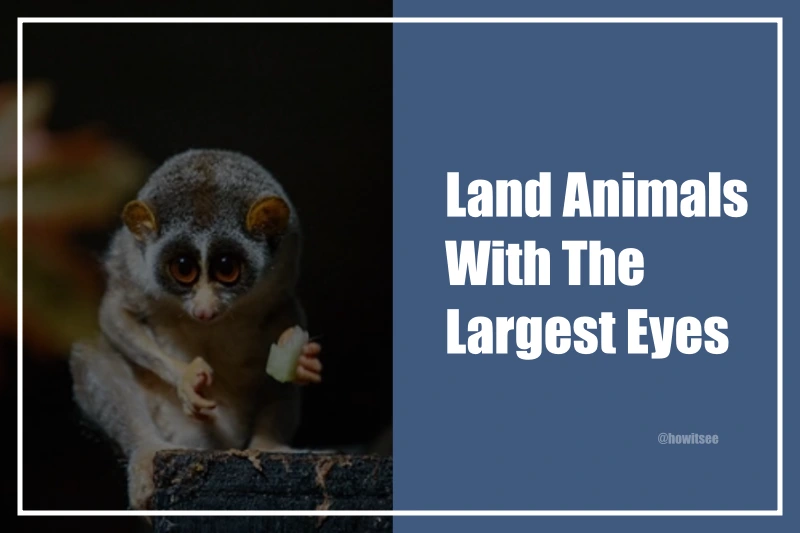The animal kingdom is a treasure trove of astonishing adaptations and features. One such captivating trait is the incredible diversity and eye sizes found among various land-dwelling animals.
From primates to reptiles to even birds, multiple species possess eyes that are disproportionately large concerning their body sizes. In today’s article, we are going to delve into the fascinating world of land animals with the largest eyes.
We are going to talk about astonishing animals in today’s article 15 Land animals with the largest eyes whose ocular features will surely leave you surprised. So without further ado, let’s get things started.
15 Land Animals With The Largest Eyes
1. Ostrich
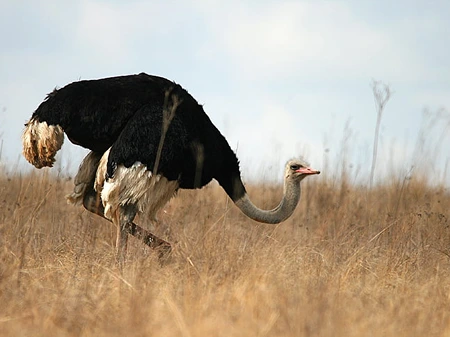
| Scientific Name | Struthio camelus |
| Body Size | 7-9 feet |
| Eye Size | 2 inches in diameter |
| Geographic Location | Native to Africa |
| Diet | Grass leaves, fruits, and occasionally other small creatures like insects, lizards |
Among all the land animals with the largest eyes, the Ostrich is the one that stands at the top. Roughly the size of a billiard ball, their eyes are quite large in comparison to the size of their head.
Such large eyes give them keen eyesight to spot potential threats on the open vast Savannah grasslands.
The horizontal pupils, unlike the usual round ones, help them with in-depth perception and estimate distances accurately, a skill highly essential in open habitats.
2. Tarsier
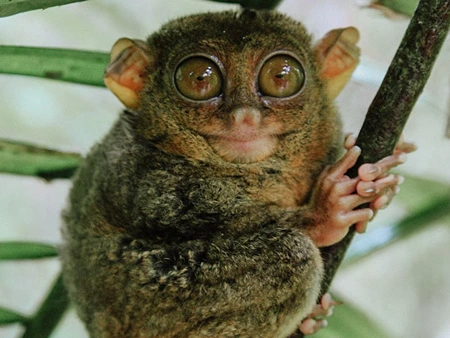
| Scientific Name | Tarsius spp. |
| Body Size | 9-16 centimeters |
| Eye Size | 16 millimeters |
| Geographic Location | Southeast Asia, like Philippines, Borneo |
| Diet | Insects like grasshoppers, crickets, etc. |
The next animal on this list is a small nocturnal primate, the Tarsier. Their large eyes, which are quite large in comparison to their body size, are well adapted to their nocturnal lifestyle.
Tarsiers have eyes that are fixed in sockets, and therefore they have to move their heads to compensate for their lack of eye movement. The front-facing eyes of a Tarsier provide them with good binocular vision.
3. Bush Babies
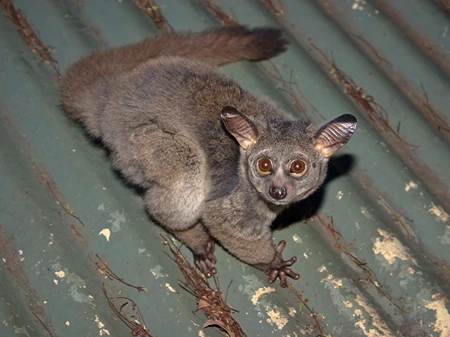
| Scientific Name | Galago spp. |
| Body Size | 10-15 centimeters |
| Eye Size | Not recorded yet |
| Geographic Location | Africa and forests of sub-Saharan Africa |
| Diet | Insects like crickets, moths to fruits, nectar, lizards, etc. |
Bush babies constitute the next animal on this list of land animals with the largest eyes. The tapetum lucidum in their eyes enhances their ability to gather light, thus aiding in low-light vision.
While bush babies do not have exceptionally large eyes in comparison to their body size, they do have quite large eyes with respect to their head size.
4. Chameleon

| Scientific Name | Chamaeleo calyptratus |
| Body Size | 150 millimeter |
| Eye Size | 18 millimeter |
| Geographic Location | Worldwide |
| Diet | Primarily insects |
Not only a master of camouflage but also the Chameleon holds the crown to have one of the largest eyes. Their eyes have been equipped with several remarkable features which make them unique.
With the ability to move independently of each other, each eye can rotate and focus on different objects simultaneously.
This allows chameleons to have a panoramic 360-degree field of view and effectively scan their surroundings for prey or potential threats.
5. Lemur
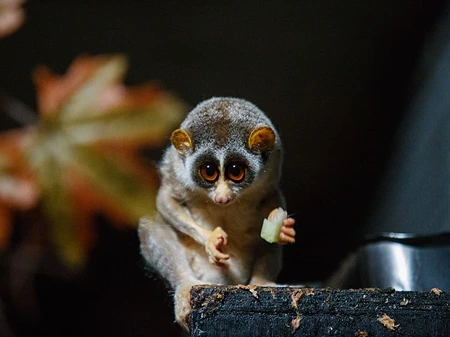
| Scientific Name | Microcebus murinus (Grey Mouse Lemur) |
| Body Size | 26-28 centimeters |
| Eye Size | 1 centimeter in diameter |
| Geographic Location | Madagascar |
| Diet | Insects like beetles, praying mantis, crickets, etc. |
Lemurs have developed several adaptations to fit their ecological niches. While some species are nocturnal, others are diurnal, and consequently, their eyes have adapted accordingly.
Nocturnal lemurs, such as mouse lemurs, have larger eyes relative to their body size, allowing them to gather more light in dim conditions.
Diurnal lemurs, like ring-tailed lemurs, have eyes adapted for daylight vision, with a reduced reliance on low-light visibility.
6. Owls
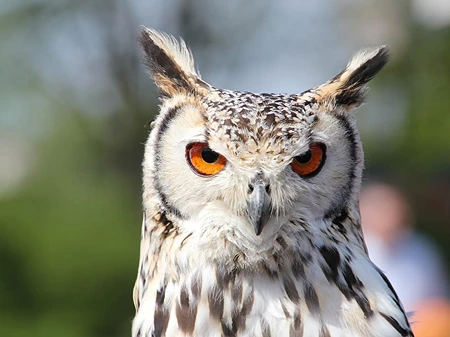
| Scientific Name | Bubo bubo (Eurasian Eagle Owl) |
| Body Size | 24-30 inches in length, 63-70 inches wingspan |
| Eye Size | around 2.3 centimeters |
| Geographic Location | Europe, Asia, Northern Africa |
| Diet | Rabbits, hares, rodents, squirrels, birds, etc. |
Owls are undoubtedly the rulers of the night sky. Their large front-facing eyes give them their characteristic intimidating look.
Owls like the Eurasian Eagle Owl or the Great Horned Owl, have the largest eyes of all owl species, keeping in view their eyes size to body ratio.
The Eurasian Eagle Owls’ eyes are roughly the size of an average human’s, but their skulls are much smaller.
These large eyes give the owls exceptional vision to locate prey and navigate their nocturnal environments with great precision and accuracy.
7. Slow Loris
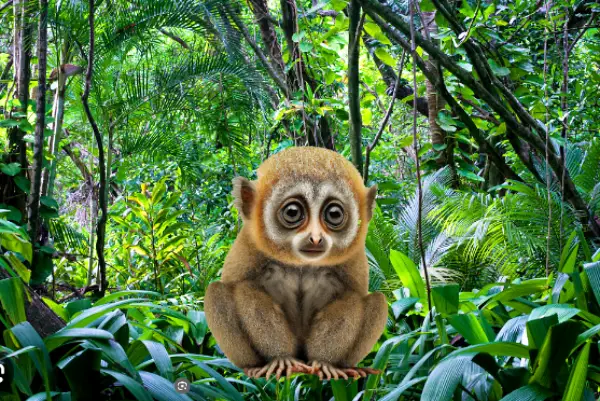
| Genus | Nycticebus |
| Body Size | 18-38 centimeters depending on the species |
| Eye Size | Unknown |
| Geographic Location | Southeast Asia |
| Diet | Fruits, nectar, and occasionally insects |
Slow Lorises are small nocturnal primates, known for their large distinctive eyes. Slow lorises have relatively large eyes in proportion to their head size.
The size of their eyes is an adaptation to their nocturnal lifestyle, allowing them to gather more light in low-light conditions and enhancing their night vision.
Slow lorises have forward-facing eyes, providing them with binocular vision, highly beneficial for their arboreal lifestyle, as they need to navigate and leap between branches with precision.
8. Tree Frog
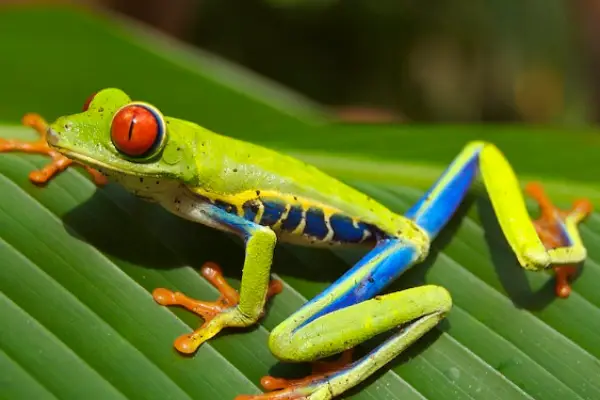
| Genus | Racophorus |
| Body Size | 4-10 centimeters |
| Eye Size | Exact size is unknown; varies from species to species |
| Geographic Location | Asian and Southeast Asian countries |
| Diet | Small vertebrates and arthropods |
In the next position on this list of land animals with the largest eyes, we have Tree Frogs.
Spread across a wide spectrum of genres and species, Tree Frogs like those belonging to the genus Rhacophorus, have disproportionately large eyes in relation to their body size.
These arboreal frogs have eyes that occupy most of their heads.
9. Gecko
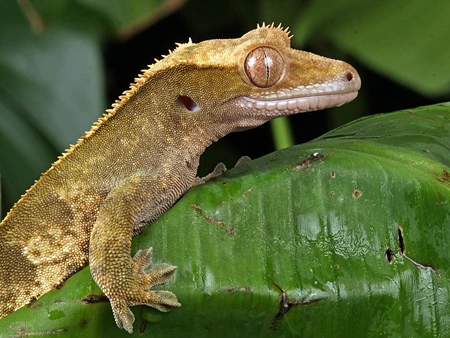
| Scientific Name(example) | Pachydactylus rangei (Namib Sand Gecko) |
| Body Size | 5 inches |
| Eye Size | Exact dimensions are unknown |
| Geographic Location | Endemic to Namibia Desert |
| Diet | Crickets, grasshoppers, small spiders |
Geckosare a family of lizards that possess some set of fascinating features when it comes to their eyes. Geckos typically have relatively large eyes in proportion to their body size.
The size of their eyes allows for enhanced visual acuity and light-gathering capabilities. Many gecko species are nocturnal or crepuscular, meaning they are most active during the night or twilight hours and their eyes have adaptations to excel in low-light conditions.
Their pupils are vertically slit for greater control over the light entering their eyes. One notable Gecko with prominent large eyes is the Namib Sand Gecko, though large eyes are a feature across all gecko species.
10. Aye-aye
| Scientific Name | Daubentonia madagascariensis |
| Body Size | 16-18 inches long |
| Eye Size | Unknown |
| Geographic Location | Endemic to Madagascar |
| Diet | Insect larvae found in wood, along with fruits, seeds, nectar, fungi |
The Aye-Aye is quite a unique primate species, endemic to Madagascar. The eyes of Aye-aye are relatively large in comparison to their body size.
Along with a long bushy tail, Aye-Ayes also have large eyes with the tapetum lucidum which enables them to navigate in the dark, forage, or manipulate objects.
11. Kinkajou
| Scientific Name | Potos flavus |
| Body Size | 16-24 inches, excluding their long prehensile tail |
| Eye Size | Not available |
| Geographic Location | Central and South America |
| Diet | Frugivorous diet |
Next up on this list of land animals with the largest eyes, we have Kinkajous, popularly known as Honey Bears. In comparison to their size, kinkajous have relatively large eyes.
They can navigate their arboreal environments and locate food in the dark at night thanks to their huge eyes’ ability to gather more light and improve their night vision.
Kinkajous have the tapetum lucidum, a reflecting layer behind their retinas like many other nocturnal creatures do.
By reflecting light through the retina, this layer helps them to see better in low light by maximizing the utilization of available light.
12. Fennec Fox
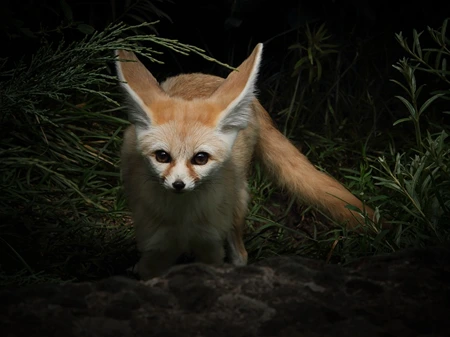
| Scientific Name | Vulpes zerda |
| Body Size | 14-16 inches |
| Eye Size | Unknown |
| Geographic Location | Sahara Desert and arid regions of North Africa |
| Diet | Grasshoppers, rodents, lizards, small birds |
Despite being the world’s smallest fox, they top the chart for being one of the land animals with the largest eyes along with having one of the largest ears.
Their large round-shaped eyes provide a wide field view, and enhanced light-gathering abilities, aiding their vision in low light
. Small faces, large eyes, and ears make these desert foxes one of the cutest beings on the planet.
13. Margay
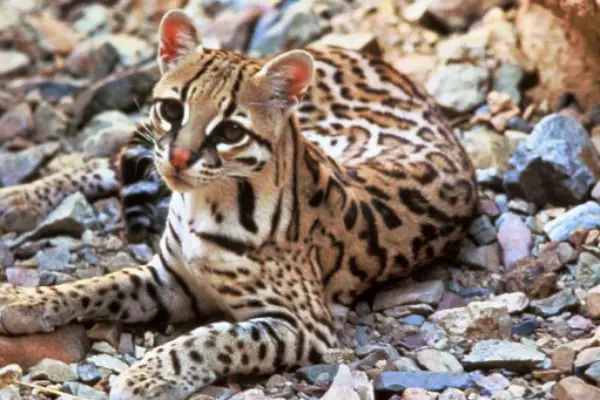
| Scientific Name | Leopardus weidii |
| Body Size | 19-31 inches |
| Eye Size | Exact measurements are not available |
| Geographic Location | Central and South America |
| Diet | Rodents, squirrels, monkeys |
Margays are small wild cats known for their appearance and agility in trees. Margays have relatively large eyes in proportion to their head size.
Their eyes are rounded, providing them with a wide field of view, which helps them scan their surroundings for potential prey and predators.
Like other nocturnal predators, Margays too have a tapetum lucidum specialized for their low-light vision.
This eye features aid them in locating prey precisely, navigating through the forest canopy, and maintaining an edge over rival species.
14. Large-eyed Green Tree Snake
| Scientific Name | Rhamnophis aethiopissa |
| Body Size | 31-47 inches long |
| Eye Size | Unknown |
| Geographic Location | Africa |
| Diet | Insects, small tree frogs, etc. |
Large-eyed Green Tree Snake, as its name suggests, has relatively large eyes compared to the size of its body. Its large eyes enable it to see more clearly and notice minute details in its surroundings.
The pupils of the Large-eyed Green Tree Snake are formed like vertical slits, like those of many snakes.
To adjust the amount of light entering the eye, the vertical pupils can dilate or constrict, which helps the snake’s visual sensitivity in various lighting conditions.
15. Asian Vine Snake
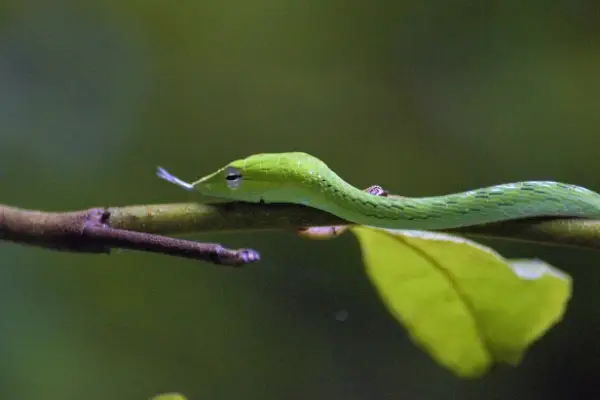
| Scientific Name | Ahaetulla prasina |
| Body Size | 1-1.5 meters |
| Eye Size | The exact measurements are unknown |
| Geographic Location | Asia |
| Diet | Insects, lizards, frogs, birds |
The last animal on this list of Land animals with the largest eyes is the Asian Vine Snake, which is commonly known as the Oriental Whip Snake.
Their eyes are quite large, that sit on top of their heads, with long slender bodies. Vertically elongated slit pupils help to regulate visual sensitivity.
Here, we come to the end of this article on 15 Land animals with the largest eyes. We intend to bring many such interesting articles shortly, so stay tuned until then.
References:
- A-Z Animals: Snakes with the largest eyes
- A-Z Animals: Gecko Animal Facts
Also Read:

A zoology student turned writer. Nature has always been a magnet to me, and to unearth some of its secrets through my articles is my prime intention. If not engaging myself with nature and anime content, you can always find me going through some Bengali classics or filling the air with some soulful Tabla beats. An artist, trying to throw some colors to my blank canvas of life.
